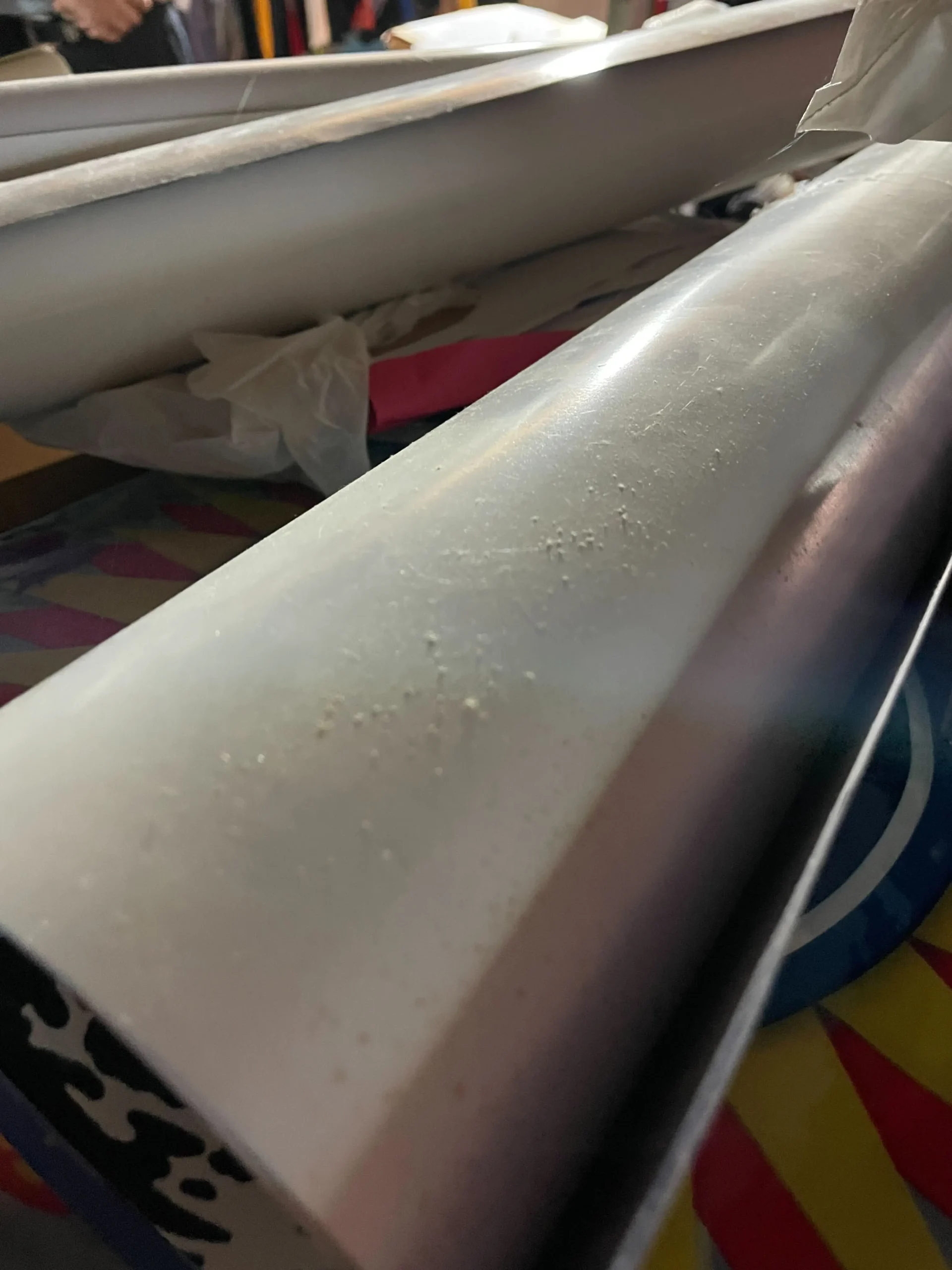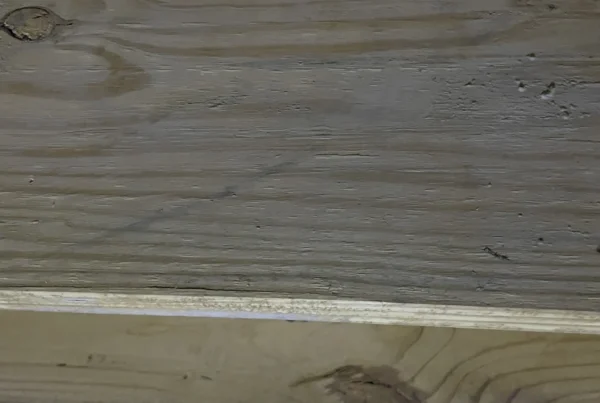
Finished Basement Part Two
I recently posted about a mold test we did on a basement beam, and shared the test results. The report shown actually had results for two mold tests; the beam, or joist, I discussed; and the second test I will discuss here.
Part One: Is This Mold in a Finished Basement?
Background Information
As I commented in the previous post, the homeowner suspected mold growth on the main support beam. This was a finished basement in Indianapolis with a lot of contents. In the pictures included in that post, you can see some rolled up poster board sitting on some boxes below the beam.
Included here is a close up of the poster board in that basement. You can see a similar white powder on the surface. Our client also had concerns that this was mold.
Because of the musty odor in the basement, a history of previous water intrusion, and a concern of persistent humidity, we suspected that this was mold growth as well. The client had concerns about his daughter’s health and didn’t want to take any chances.
Taking a Surface Sample
My best guess was, “Yes, it is likely mold growth or there will be a significant amount of mold spores present on the surface,” but the only way to know for sure was to do a mold test. Again, we used a sterile swab on the area to pick up the dust and debris on the surface, sealed it, and sent it off to the lab.

Mold Test Lab Results
If you read the previous post, or skipped ahead to the report below, you may have already seen the results of the poster board test, “No Fungi Present.”
- Our Prediction: Yes, this is mold
- Test Results: No, this is not mold
My initial ‘best guess’ was wrong yet again.
Recommendations to Our Client
Even though there was no mold found on the poster board, or the basement beam, there were still some concerns. The amount of dust in the basement, combined with high humidity, could still lead to mold growth in the future. We advised the client to complete the following:
- Perform a good general cleaning of the area.
- Organize contents in the basement and remove items that are most prone to mold; poster board, cardboard boxes, clothing, etc.
- Monitor humidity levels and, if necessary, use a dehumidifier to help keep the space dry.
- Periodically check the basement for water intrusion from leaks, condensation, etc.




